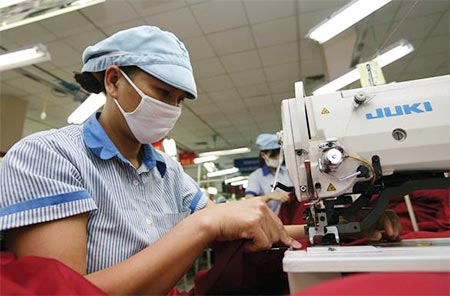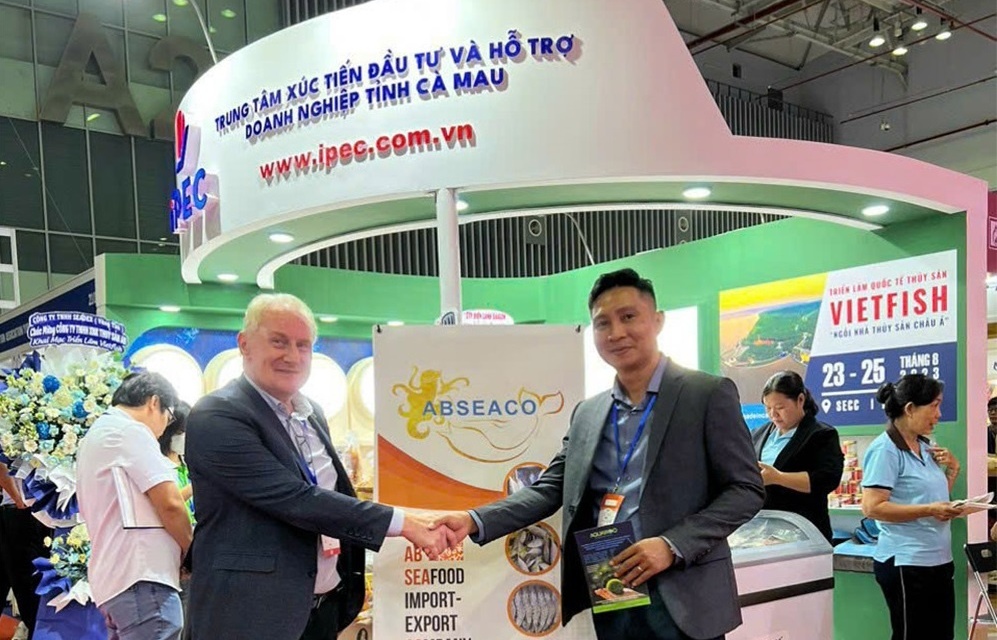Textile businesses investing in advance of TPP

In early 2014 leaders of state-owned Vietnam National Textile Garment Group (Vinatex) announced to the press that if the Trans-Pacific Partnership (TPP) agreement was signed, the domestic textile and garment sector could reach $25 billion in export revenue before 2020 and the localisation rate could be raised from the current 45 per cent to 70-75 per cent.
Pham Xuan Trinh, general director of Ho Chi Minh City-based Phong Phu Corporation (PPC) has unveiled an ambitious plan for the company aimed at posting $1 billion in revenue between 2015 and 2020 from the company’s VND1 trillion ($47.6 million) total investment.
For the period 2015-2016 the company envisages pumping capital into a modern spinning line that employs 20,000 spindles and has an estimated production capacity of 3,200 tonnes per year. During 2018-2019 it plans to build another 20,000 spindle plant that specialises in top-grade fabric production. This ambitious plan would bring the company’s network of modern spinning plants up to 10, reported VnExpress.
This year the company expects to achieve VND7.3 trillion ($347 million) in revenue, of which domestic sales are planned to account for one-third, and VND320 billion ($15.2 million) in pre-tax profits, bringing it closer to its goal of a billion dollars over the next five years.
Viet Tien Garment JSC, one of the top players in the sector, has set its revenue target for this year at VND5 trillion ($238 million).
According to the company’s first-half financial statement, Viet Tien posted VND2.5 trillion ($117.4 million) in revenue for the period, up 7 per cent on-year and reaching 51 per cent of the full-year plan. Its post-tax profits hit VND141 billion ($6.7 million).
Last year, the company reached VND4.8 trillion ($228 million) in revenue, up 24 per cent against 2012.
Executives at the company said they have scaled up efforts to consolidate traditional export markets while also tapping new markets to effectively utilise trade pacts Vietnam has signed with other countries.
Similarly, some other big players such as Nha Be, Garco 10 and Garmex Saigon have reportedly invested in market research, branding, technology, design and new products to boost domestic market share.
Pham Xuan Hong, deputy chairman of the Vietnam Textile and Apparel Association (VITAS) said the prospect of Vietnam joining the TPP has provided an impetus for local firms to invest in improving their export status, particularly in terms of the US market.
“By that time, the target of a billion dollars over five years will be easy for some of the sector’s biggest players,” Hong told VnExpress.
Hong also suggested that local textile and garment firms increase co-operation, develop a closed process from fibre making and spinning to garment production, and gradually shift from export processing to more active models such as ODM (in-house design and production before selling) to develop more sustainably.
What the stars mean:
★ Poor ★ ★ Promising ★★★ Good ★★★★ Very good ★★★★★ Exceptional
Latest News
More News
- Rice exports set to break records (November 21, 2024 | 17:53)
- Growth beckons for GenAI startups in Vietnam (November 21, 2024 | 17:47)
- SABECO to elevate Vietnam's beverage industry to global standards (November 21, 2024 | 17:36)
- ABeam Consulting Vietnam introduces BSQCD Purchasing Strategy Framework (November 21, 2024 | 16:40)
- Major railway requires debt considerations (November 21, 2024 | 12:07)
- Reviving a new life cycle for plastic waste (November 21, 2024 | 09:16)
- Key balances maintained for industrial production (November 21, 2024 | 08:00)
- Ecolean Vietnam honoured with prestigious sustainability award (November 19, 2024 | 10:01)
- HEINEKEN Vietnam’s clear path towards net-zero (November 18, 2024 | 15:13)
- VLCA 2024 honours corporate governance excellence as listed companies raise the bar (November 18, 2024 | 09:00)


















 Mobile Version
Mobile Version